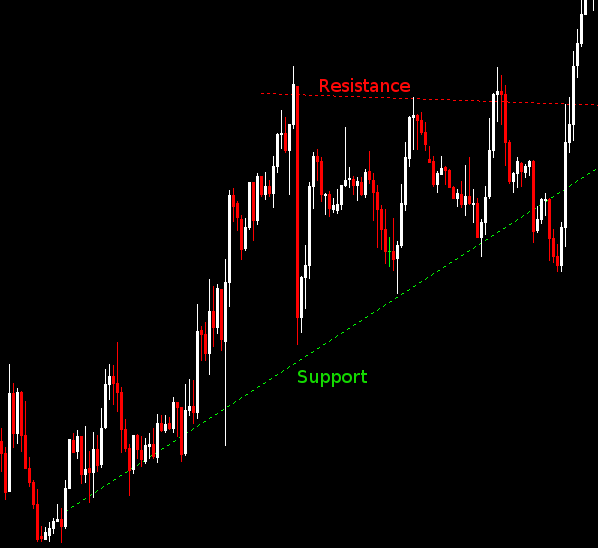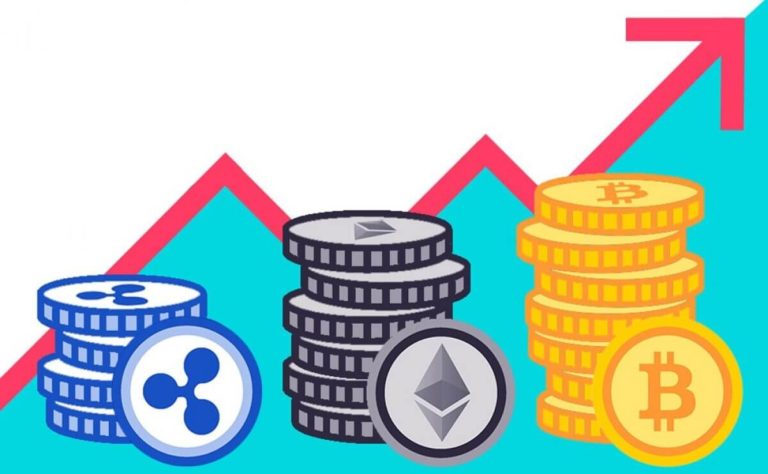Bitcoin As An Investment: Pros & Cons
Ever wondered how useful a bitcoin investment can be? Look here as we explore its different aspects and weigh the pros and cons.

Bitcoin keeps growing in popularity and utility. And given the rising levels of inflation and non-stop news of Bitcoin gains, it is natural to consider using the crypto coin as an Investment.
Bitcoin is not a standard investment vehicle, however, as there is no fixed percentage gain to expect each month or year. Though it has delivered significant returns for investors, Bitcoin was conceived as a non-inflationary means of value exchange and storage.
This post looks at the various features that make Bitcoin an outstanding system and considers different ways to profit from them. You will still need some planning and a little work on your part though.
The Need to Invest
The human condition is a double-edged sword; life gives and takes. When you are young and full of energy, you can earn more than you need to survive with ease. But with old age, you can barely do enough work to sustain yourself.
Humans have known this for ages, and the oldest solution is to bear and raise children, who will then look after you in old age. Another solution is to save part of your earnings when you are young. You can then take care of yourself in old age. This second solution is great with gold and other precious items, but less so with fiat currencies.
Paper money as we know it today was originally IOU notes from goldsmiths who stored gold for wealthy individuals. They then found out that the depositors hardly ever came back to collect their gold, but rather exchanged the IOUs during transactions. This led the goldsmiths (or early bankers) to issue more IOUs than they had in gold, birthing thereby the fractional gold reserve standard in banking.
Governments then copied what these banks were doing. And over time, many countries even decided there was no need to have a stockpile of gold backing a fraction of the currency. So, that’s how fiat currencies came into being – paper money created out of thin air.
Fiat currencies come with an inbuilt de-valuator; they give governments the ability to print as much money as they want. And the result of this printing rampage is usually inflation, which erodes the value of your savings in the bank.
There has to be a better way.
The Oldest Blockchain
Yap is a small island of slightly over 11,000 inhabitants in the pacific ocean’s Federated States of Micronesia. The Yapese, as they are called, are known for using large limestone discs as money in the past and even to this day.
These discs can measure up to 3 meters in diameter and are so heavy that they are left in a single spot. They are scattered all over the island and everyone knows their oral and ownership histories.
All that is needed to change ownership is a verbal agreement that everyone is aware of, just like the distributed ledger system of a Blockchain. But the best part of this monetary system is that the value of each stone is calculated by how much work went into it.
For ages, the Yapese undertook voyages to distant islands, so they could mine and shape these limestone discs. They then have to carry them on rafts with their canoes back to Yap. Some of these voyages lasted years and some of the men died in the process.
These conditions set certain rules, such that the bigger the disc, the longer the voyage took, or the more men that died for it, the higher its perceived value. In the Blockchain world, this is called Proof of Work.
Even when Europeans helped some Yapese to mine and ferry the stones easily with modern tools and ships, the value of the new stones was lower. And the reason was that they were inferior to similar-sized original discs, which were won traditionally.
Unlike fiat currencies that a government could print trillions of on a whim, Bitcoin’s proof of work, distributed ledger, and 21-million coin-limit mechanisms ensure that each coin will store more value over time than any fiat currency.
This makes Bitcoin a more profitable savings tool than bank deposits, but what about producing returns as an investment?
The Advantages of Bitcoin As An Investment
From an investment perspective, there are two types of investors out there: Those that are positive about Bitcoin. And those that see it as a Ponzi scheme that must eventually crash.
Here are the major reasons for the Bitcoin Bulls and why they are sure its value will continue to rise:
- High Return Potential – This is the number one feature most people know about Bitcoin. 1 BTC was worth less than $0.01 in 2009, but nearly $40,000 today.
- International – Anyone from anywhere can join in. There are no political hurdles on the network, no fascism. It is truly international.
- Finite Supply – Unlike fiat currencies that can be printed in their trillions, Bitcoin is limited to 21 million coins. This means there are no inflation issues and makes it a perfect collectible for value storage.
- Very Liquid – Given the high popularity and number of participants, you will always find people willing to trade with you.
- Instant Liquidation – You can easily cash out your BTC holdings.
- Easy Access – Countless platforms offer countless Bitcoin services.
- Anonymity – Though it’s not a 100% anonymous medium, Bitcoin still offers higher levels of privacy and anonymity than traditional banking.
- Freedom from Oppression – It is perfect for citizens of oppressive governments.
- Alternative Legal Tender – It is also a great alternative for citizens of badly managed and collapsing economies, whose currencies are riddled with high inflation.
The Disadvantages of Bitcoin As An Investment
Of course, there are also disadvantages to Bitcoin as an investment. And here are the major ones.
- Hacking Threat – Unless you use a cold wallet that is not connected to the Internet, your crypto holdings are at risk of hacking attacks. And in 30-50 years, quantum computers could even make it easy to crack the private keys from even cold wallets.
- Price Volatility – Bitcoin and most other popular cryptocurrencies suffer from extremely volatile prices. Of course, price swings are a normal feature of currencies, but the volatility of cryptos is relatively wild.
- No Insurance for Loss – If someone hacks your account and steals your Bitcoins or hacks the exchange and steals your Bitcoins. Or if you send Bitcoins to the wrong recipient, your funds are lost. Bitcoin is mostly unregulated around the world, so there are no governmental interventions.
- No Password Recovery – If you lose your private key, then that’s it. Your fortune is lost forever. There is no password recovery here.
- Environmental Issues – Bitcoin uses tremendous amounts of energy, over 100 TWh per annum. This means it uses more energy than either Argentina, Sweden, or the Netherlands.
- Government Bans & Restrictions – From China to Turkey and Nigeria, governments around the world are either outright banning cryptocurrencies or severely limiting their use in everyday transactions.
- No Defined Returns – Most standard investment vehicles have a defined ROI (Return On Investment) that you can count on. Bitcoin has none. Its value depends solely on its perceived value by the masses, making it more of a collectible.
- Fear of Pyramid Schemes – As with the South Sea Bubble and Tulip Mania, many investors suspect that Bitcoin prices might come crashing one day. And that in the ensuing panic, most holders will dump their holdings, leading to widespread losses.
Some Bitcoin Investment Tips
If you have decided to try Bitcoin as an investment, then here are solid tips to help you along the way to success.
1. Only Invest What You Can Afford To Loose
Investing is a risky business. So, the best solution to mitigate risk is to only invest what you can afford to lose. What does this mean?
Well, you invest an amount that will not be life-shattering if you lost it. Keep in mind that most regulated investment vehicles are relatively safe when compared to Bitcoin. There could be deposit insurance and other governmental safeguards, but this is not the case with Bitcoin.
Your strategy here should be: Hope for the best and plan for the worst. Many bad things can happen to affect your investment. But while you do not wish for them, it’s best to plan against them. And the best way to do that is to start with money you can afford to lose.
2. Buy Low – Sell High
It is easy for many new investors to jump into the markets and start buying up Bitcoins. But when the markets tank, then the adventure turns sour. So, learn to find the highs and the lows first before you jump in.
Take a look at Fig 1. which shows the support and resistance levels of a financial instrument. Buying low means buying the asset only when prices are around the resistance levels. And only selling when prices are around support.
Of course, there will be exceptions to this rule, but they are rare. More often than not, prices start climbing after hitting a support line and vice versa.
So, if you want your investment to grow substantially over time, wait for the right moment to make your buys. And this moment is when prices hit a major support line.

3. Go Long Term
The difference between speculation and investment is duration. If you are looking to profit from quick short-term market moves, then you are speculating. But if you are looking to profit from a long-term rise in asset value, then you are investing.
So, to use Bitcoin as an investment vehicle, you will need to think in the long term. Buy the little you can today, without needing to cash it out in a week or two. Patience is the key here.
4. Make Periodic Contributions
The best method of building a solid portfolio is with periodic additions. That is unless you have a stockpile of capital to invest at a go.
By making periodic contributions, your asset value will tend to even out over time. While this means that you can always buy the asset when prices are obviously above the support line, it does not mean you should buy at very high prices, and especially not near the resistance line.
5. Diversify
Another proven method of wealth creation is diversification, as it helps to mitigate risk. The wisdom here is simple – always leave fiat savings in your bank account. Buy some Bitcoin, and include other popular cryptos such as Ethereum, Solana, Cardano, and so on.
6. Secure your Investments
If you want to secure your investment by reducing hacking threats to a minimum, then you will need a cold wallet to hold your funds.
A perfect cold wallet is simply copying your public and private Bitcoin addresses on a piece of paper, or storing them on a phone or computer with no Internet connection ever.
You can also use 3rd party applications like the Ledger or Trezor hardware wallets. But keep in mind that they can also get hacked through phishing attacks. Also, avoid all websites that offer cold wallets by printing your Blockchain addresses on paper for you.
Should you decide to use an online wallet service, however, then here are tips to keep in mind when creating a password.
- Make it as long and complex as possible
- Avoid using common words and phrases
- Do not use personal information
- Include alphanumeric characters in your password
- Do not reuse passwords across platforms
Conclusion
We have come to the end of this exploration of Bitcoin as an investment vehicle. And you have hopefully seen its promising nature regarding profits, as well as the potential risks.
The advice is to give Bitcoin a try with a small part of your capital while sticking to your traditional investments and savings. This is called diversification and it will make you a better investor.


